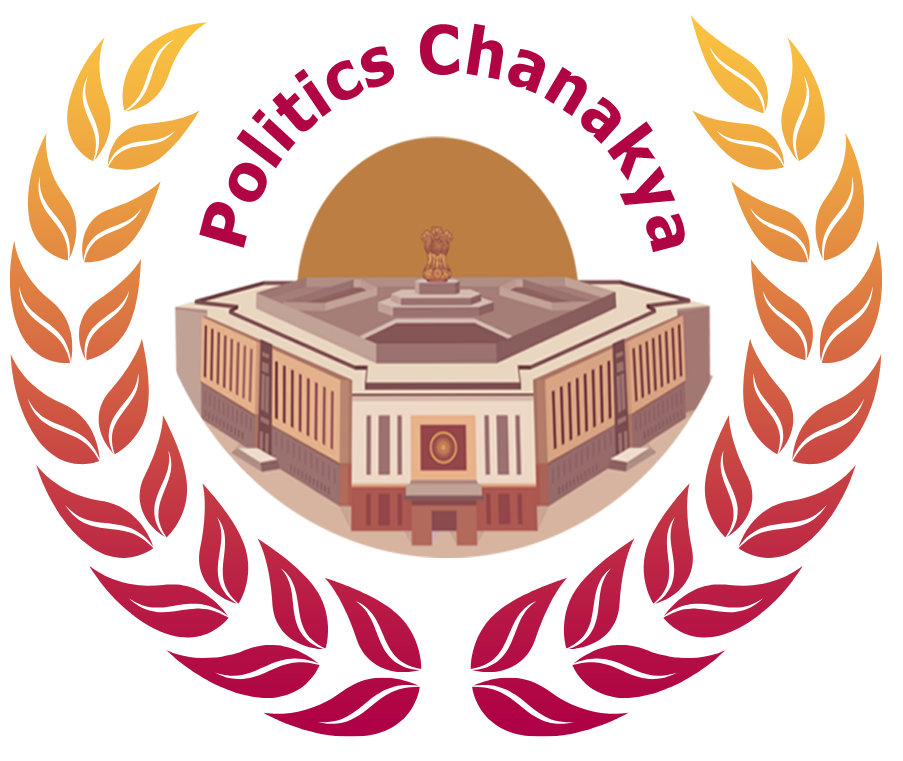Targeted Online Advertising
- Introduction
- Understanding the Indian Political Landscape
- The Basics of Targeted Online Advertising
- Audience Segmentation
- Crafting the Message
- Effective Platforms for Political Advertising in India
- Leveraging Data Analytics
- Regulations and Ethical Considerations
- Budgeting and ROI
- Case Studies
- Integrating with Traditional Campaign Methods
- Future Trends in Political Online Advertising
- Crisis Management in Online Spaces
- Feedback and Adaptation
- Conclusion

Introduction
The Rise of Digital Marketing in Indian Politics: Over the past decade, digital marketing has emerged as a powerful tool in Indian politics. With the increasing accessibility of the internet and smartphones, political parties and candidates have recognized the potential of digital platforms to influence public opinion, mobilize support, and sway voter decisions.
Overview of Targeted Online Advertising: Targeted online advertising refers to the strategic placement of ads on digital platforms, aimed specifically at certain demographic segments based on their online behavior, preferences, and other metrics. This form of advertising allows political entities to deliver customized messages to the right audience at the right time.
Understanding the Indian Political Landscape
Diversity in Indian Politics: India’s political landscape is marked by its immense diversity, encompassing a wide range of languages, cultures, religions, and socio-economic backgrounds. This diversity presents both a challenge and an opportunity for targeted online advertising, necessitating a deep understanding of regional nuances and voter sentiment.
Digital Penetration in India: Despite being a developing nation, India has witnessed a significant surge in digital penetration, with millions of new internet users coming online every year, particularly from rural areas and smaller towns. This expanding digital footprint offers a fertile ground for political campaigns to leverage online advertising for wider reach and impact.
The Basics of Targeted Online Advertising
What is Targeted Advertising? Targeted advertising in the digital realm involves using data analytics and user profiling to deliver specific political messages to segmented groups of the electorate. This can be based on various criteria such as age, location, browsing history, and social media activity.
Platforms for Targeted Advertising: Several platforms play a pivotal role in targeted online advertising. Social media networks like Facebook, Twitter, and Instagram are widely used for their extensive reach and sophisticated targeting tools. Search engines like Google offer targeted advertising through search results and affiliated websites. Additionally, video platforms like YouTube and local Indian social media apps also serve as effective channels for targeted political advertising.
Audience Segmentation
Demographic Segmentation: In the context of Indian politics, demographic segmentation involves dividing the audience based on variables such as age, gender, income, education, and geographic location. For instance, the political concerns and media consumption habits of urban youth will differ significantly from those of rural elders, necessitating distinct approaches in targeting these groups.
Behavioral Segmentation: This type of segmentation focuses on the audience’s behavior, including their online activity, voting history, and engagement with political content. Behavioral segmentation helps in understanding the electorate’s interests, preferences, and loyalty, allowing for more personalized and effective political messaging.
Crafting the Message
Tailoring Messages for Different Audiences: The effectiveness of targeted advertising lies in the ability to craft messages that resonate with specific audience segments. For example, younger voters might be more responsive to messages about education and job opportunities, while older demographics might prioritize healthcare and social security. The key is to align the political message with the audience’s priorities and concerns.
Language and Cultural Considerations: Given India’s linguistic and cultural diversity, messages need to be tailored not only in terms of content but also in language and cultural context. This might involve creating campaigns in multiple regional languages and ensuring that the content is culturally relevant and respectful.
Effective Platforms for Political Advertising in India
Social Media Platforms: Social media platforms like Facebook, Twitter, and Instagram are incredibly effective for political advertising in India due to their vast reach and sophisticated targeting capabilities. Additionally, Indian social media platforms like ShareChat, which cater to regional language users, are increasingly becoming important for reaching a wider and more diverse audience.
News Websites and Mobile Apps: Online news websites and mobile apps are also significant platforms for political advertising. They are particularly effective for reaching an audience interested in current affairs and politics. Advertising on these platforms can be tailored to appear in specific sections or alongside certain types of content, thereby reaching a more targeted audience.
Leveraging Data Analytics
Analyzing Voter Behavior: Data analytics plays a critical role in understanding voter behavior. This involves analyzing vast amounts of data collected from various sources, including social media interactions, website traffic, and online polls, to gain insights into voter preferences, concerns, and tendencies. This information helps in crafting more effective and targeted campaign strategies.
Ad Performance Metrics: Monitoring the performance of online ads is essential for refining and optimizing the campaign. Key performance metrics include click-through rates, conversion rates, engagement rates, and the reach of the ads. Analyzing these metrics allows political campaigns to understand what resonates with the audience and to adjust their strategies accordingly for maximum impact.
Regulations and Ethical Considerations
Legal Framework in India: The legal framework governing digital advertising in India includes laws and regulations related to digital communication, data privacy, and election campaigning. Political parties and candidates must adhere to guidelines set by bodies like the Election Commission of India, which may include restrictions on advertising content, expenditure reporting, and data usage.
Ethical Advertising Practices: Beyond legal compliance, ethical considerations in digital advertising are paramount. This includes avoiding misinformation, respecting privacy, and ensuring that ads are not manipulative or offensive. Ethical advertising practices help in building trust with the electorate and maintaining the integrity of the political process.
Budgeting and ROI
Allocating Budgets Effectively: Effective budget allocation is crucial for any political campaign. This involves determining how much to spend on different digital channels based on their effectiveness and reach. It’s important to balance the allocation between various platforms, such as social media, search engines, and digital news outlets, to achieve optimal campaign coverage.
Measuring Return on Investment: Understanding the ROI of digital advertising campaigns is essential for evaluating their effectiveness. ROI in the context of political advertising can be measured in terms of increased voter engagement, higher name recognition, and ultimately, electoral success. This measurement helps in making informed decisions about where to invest resources for the best outcomes.
Case Studies
Successful Campaigns in Indian Politics: There are numerous examples of successful online political campaigns in India that have leveraged digital platforms for significant impact. These case studies often highlight the innovative use of social media, targeted advertising, and digital outreach to engage with a wide spectrum of the electorate. Analyzing these campaigns offers valuable insights into effective tactics and strategies.
Lessons Learned and Best Practices: From these case studies, crucial lessons can be learned about what resonates with the Indian electorate in the digital domain. Best practices might include the strategic use of local languages, culturally relevant content, real-time engagement with voters, and the effective use of data analytics for targeted advertising. These learnings can guide future campaigns in shaping their digital strategies.
Integrating with Traditional Campaign Methods
Blending Online and Offline Strategies: While digital strategies are crucial, they are most effective when integrated with traditional campaign methods. This blend might involve using digital platforms to augment ground campaigns, such as rallies and door-to-door canvassing, or using offline events to drive online engagement and vice versa.
Coordinated Campaigns: A coordinated approach ensures that the messaging and objectives are consistent across both online and offline channels. This synchronization enhances the overall campaign effectiveness, creating a seamless experience for the electorate and maximizing outreach and impact.
Future Trends in Political Online Advertising
Emerging Technologies and Platforms: The future of political online advertising in India is likely to be shaped by emerging technologies such as artificial intelligence, machine learning, and big data analytics. These technologies can provide deeper insights into voter behavior and enable more personalized and effective advertising strategies. Additionally, new social media platforms and communication channels may emerge as significant mediums for political advertising.
Predicting Future Shifts: Anticipating future trends in the digital landscape is key for staying ahead in the fast-paced world of political campaigning. This might involve keeping an eye on the evolving digital habits of the electorate, the emergence of new digital platforms, and changes in regulatory frameworks governing online advertising. Staying adaptable and agile in the face of these shifts will be crucial for political entities seeking to make an impact in the digital domain.
Crisis Management in Online Spaces
Handling Negative Publicity: In the digital age, negative publicity can spread rapidly. Political campaigns must be prepared to address any unfavorable situations that arise online. This involves monitoring social media and other digital platforms regularly, identifying potential issues early, and addressing them transparently and effectively. Crafting clear, honest, and empathetic responses can help mitigate the impact of negative publicity.
Quick Response Strategies: Speed is key in crisis management. Developing a rapid response team equipped to handle online crises can be extremely beneficial. This team should have clear protocols for responding to various types of crises, ensuring that responses are timely, coordinated, and aligned with the overall messaging of the campaign.
Feedback and Adaptation
Engaging with Audience Feedback: Audience feedback on digital platforms provides valuable insights into the effectiveness of the campaign’s messaging and strategies. Engaging with this feedback, whether positive or negative, shows that the campaign values the opinions of its audience. This engagement can take the form of responding to comments, addressing concerns raised by the electorate, or even adapting campaign strategies based on the feedback received.
Adapting Strategies Based on Data: The digital landscape is dynamic, and so should be the strategies employed within it. Using data analytics to understand how different strategies are performing allows for real-time adaptation. This might involve shifting focus to more effective platforms, tweaking messaging to resonate better with the audience, or reallocating resources to more successful tactics.
Conclusion
Summarizing Key Strategies: The key strategies in effective political advertising in India include understanding and segmenting the diverse electorate, crafting tailored messages, leveraging data analytics, integrating digital with traditional campaign methods, managing crises effectively, and continuously adapting strategies based on feedback and data. These strategies are underpinned by a deep understanding of the Indian political landscape and the evolving digital habits of the electorate.
The Future of Political Advertising in India: Looking ahead, the future of political advertising in India seems to be increasingly intertwined with digital innovation. Emerging technologies like AI and machine learning are set to play a more significant role in understanding and predicting voter behavior. The rise of new digital platforms will offer fresh avenues for political engagement. Furthermore, the increasing importance of digital literacy and ethics in political campaigns will likely shape the strategies employed by political entities.
